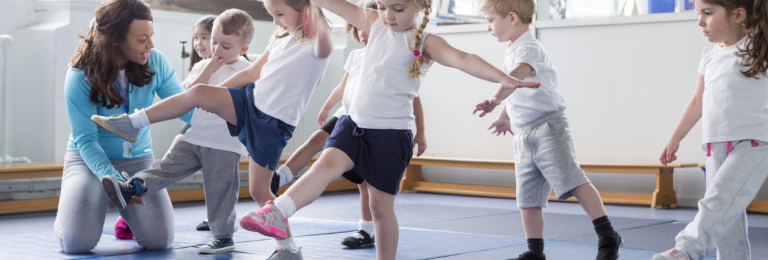Creative balances
Age
3-5 years
Child Development
Vocabulary (e.g. sit, squat, cross-legged, balance, juggle); number knowledge; support activity with talk and sign (interpreting instructions)
Equipment
None
Physical Activity
Developing movement skills (body awareness and manipulation, balance); creativity
How to Play
- Show the children different ways to balance. Invite them to copy your actions (e.g. stand on one leg; on tiptoes; two knees and one hand; bottom and two hands; cross-legged; knees and one elbow, etc.).
- Play “Puzzle Balances.” Ask the children to show how they can balance on different combinations of body parts (e.g. “balance on your bottom and two elbows”; “balance on one foot and one hand”; “balance on a part that has no toes”). Call out a number for how many parts can touch the floor.
- Read the “Upside Down” poem together and invite the children to suggest tricky balances and challenges to try.
- UPSIDE DOWN by Aileen Fisher
It’s funny how beetles
and creatures like that
can walk upside down
as well as walk flat.
They crawl on a ceiling
and climb on a wall
without any practice
or trouble at all.
While I have been trying
for a year (maybe more)
and still I can’t stand
with my head on the floor.
- UPSIDE DOWN by Aileen Fisher
Excerpt from the HOP Early Learning Practitioners Resource (Decoda Literacy Solutions)
